The first snowdrops to flower just inside Dancing Bear Wood, 30 January 2025
In Scottish folklore, Beira (the Cailleach) is the goddess of winter. She holds a young woman, Bride, captive in the icy northern kingdom, and one day sends her to a freezing stream with a brown cloak, ordering her to wash it until it becomes white. Of course Bride cannot do this, but she is rescued by Father Winter who turns the cloak white and gives the young woman a bunch of snowdrops. When she returns with them, Beira is livid with anger, as the snowdrops are a sign that her power is waning. She stomps across the land, banging her staff and bringing fresh frosts and snowfall wherever she treads.
Hello, and welcome to this New Moon edition of Bracken & Wrack, coming to you on the cusp of Imbolc or Candlemas. In fact these are two discrete festivals. Imbolc meaning either ‘in the belly’ or ‘ewe’s milk’ falls on 1 February, St Brigid’s Day, while the date of Candlemas is 2 February. As Candle-Mass suggests, this was the day in the pre Reformation yearly round when all the candles destined to flicker before sacred images and altars were taken into the church to be blessed. Today though, the names are used pretty much interchangeably and 1 February tends to be the date that’s recognised, with St Brigid’s Eve on 31 January a very special and liminal time, alive with magic and folklore.
I know that many folklore researchers and those generally interested in folk practices will write about these two festivals, so I won’t add to the cacophony but go a little sideways. Especially since I would like to share the promised write-up from the Whittlesey Straw Bear festival while it’s still (just) the season of plough boys, cross dressing, dance and general mayhem.
Old Glory in the Square, Whittlesey Straw Bear Festival, 11 January 2025
After all, at one time, the Christmas greenery was left up until, not Twelfth Night as you might imagine, but Candlemas. Taking down the holly, ivy, mistletoe and box and perhaps burning it in order to clear out stagnant energy and start afresh seems very appropriate as winter tips over into earliest spring and snowdrops begin to sway, the sound of their tiny bells coaxing the Fair Folk to pick up their heels and dance once more.
Meanwhile, although I think of March as the month of blustery winds, sunshine and sudden downpours, late January is giving it a run for its money. Each time I’ve sensed sun-shafts playing through the cobwebbed window panes I think I’ll take a walk along the lane ‘in a minute’, but as soon as I’m ready to head out I find that the sky has darkened dramatically again and I hear rain pattering into the wood stove through the flue or rattling the windows. Once the bin even blew over, leaving a stray apple-wrapper flapping back and forward on the front garden’s ragged hellebore leaves.
Still, there’s always a moment of respite. I needed fresh air so I seized my chance. Oh the mud, the puddles. It was the sort of day when you listen for approaching cars, hoping they will turn a different way so you won’t have to jump onto the even muddier bank to avoid being splattered. The air was sweet and the breeze refreshing even though I hadn’t expected it to find the gaps between the stitches of my woolly hat quite so readily. But the chill was soon forgotten as I noticed how brazenly the bare hedges reveal their bodies at this time of year; an airy veil with thick dark muscles rippling underneath.
Rooks swirled in family groups, filling the sky with their chirruping calls They already have an eye to the treetops by this time on a January afternoon, early as it is. But it seemed they couldn’t quite give into evening yet, as they twisted and turned, raking the sky over the furrows.
As I watched, two flocks met head on and I stood, spellbound, as they riffle-shuffled through each other. Would they circle around and perform the feat again, just because they could? I never found out. A few metres ahead, stretching right across the lane, lay a very big puddle. It looked dauntingly deep, so I decided that it was a sign to turn back and get on with something useful back at the cottage.
If I were a rook though, I have a feeling I’d have splashed through just for fun.
Robins’ pincushions revealed: Stokesby, Norfolk, 26 January 2025
On Brigid’s Night
spring was calling a long way off, below the horizon
invisible but heard, like a changed note;
my ears attuned, I lit candles around the room …
… My eyes half-closed
I watched them burn all night, watched wax spill pools
and curl and flow, the flames dip low,
wrapped round in shadows, caught in the eye of light.
Hilary Llewellyn-Williams, ‘Candlemas’ (extract)
Last year’s Brigid Cross hanging in the bedroom window. Nearly time to replace it and give the old one back to the land. 29 January 2025
It’s said that the archangel of Saturn is Cassiel. ‘His flower is the snowdrop or winter bell, little flower of hope and consolation’.
No-one is quite sure whether the snowdrop is native to Britain. It’s first mentioned growing wild in the 1770s but there’s an illustration of it in the first edition of Gerard’s Herball of 1597 and it’s found growing plentifully in the grounds of ruined monasteries.
In this issue of Bracken & Wrack:
Muddy Lane Musings
Snowdrop Lore (sprinkled here and there, found in writings by Claire Nahmad, Michael Howard, Lia Leendertz and Nigel Pearson)
Following The Bear: A day like no other
The Well-Maidens’ Lemon & Spice Candlemas Biscuits
Sunshiny reflections at the Alder Carr, 29 January 2025
Common folk-names for the snowdrop include Candlemas Bells, February Fair Maid, Mary’s Tapers and Dingle-Dangle.
Clumps of snowdrops spread very slowly, making the plant a good indicator of ancient woodland. However, it spreads quickly along stream and river banks, the water carrying bulbs downstream to colonise new areas.
As the Wheel of the Year turns
So the Light increases
Come back to us Bright Lady
Across the dark waters
From the mists of Avalon
Mystic Isle of Apples,
Return this Candlemas Day
To the Land and its Folk.
Awake Bright Lady
From your slumber
Transform the wasteland
This barren earth,
Frozen in winter’s icy grip.
Great Lady,
Flower bride to be
At summer’s coming,
Stir from thy dreams
Melt the snows,
Banish ice and frost,
Lighten the darkness
Restore the green world
With thy holy breath of life.
Michael Howard, words extracted from ‘Candlemas: the Rite of the Waxing Light’, Liber Nox
A frosty climb up to the heath, 26 January 2025
The French name for the snowdrop is perce-neige, which means ‘snow piercer’.
It’s said to be unlucky to bring snowdrops into the house, except on the day of Candlemas.
FOLLOWING THE BEAR
After a deep rose and apricot sunrise over grass that was crispy and bristling with ice - the temperature had dipped to minus 4 the previous evening - we had a lovely hot porridge breakfast behind the van. And then, there was just a little while to wait until it was time for the procession to begin. As luck would have it, the dancers and musicians would be leaving from that very car park to snake their way in a blaze of colour, movement and clashing melody towards the centre of Whittlesey, following the rhythmic steps of the Straw Bear.
Already the tribes of dancers were beginning to assemble; here a flash of red and a flicker of pheasant feathers, there a huddle of green and gold. Time to wander towards the top of the car park, with excitement mounting as the jingling of bells intensified by the second.
Just by the opening, a duo of little lads in flat caps and plough-boy attire and, I guess, their dad, were putting the finishing touches to a colourful child-sized plough bearing a miniature Straw Bear. Their jackets and hats, like so many others we saw that day, were shining with badges proclaiming their attendance at Straw Bear festivals of previous years, sometimes stretching back over decades. They set the scene perfectly.
As we approached, I heard Dad ask the boys ’Is this where you want the swede?’ I was fascinated to watch the earnest way they both stooped to inspect the medley of vegetables hanging from blue wires beneath the woodwork before signalling their approval, and my heart glowed.
Curiously, we never saw them again beyond that point, but surely their presence was a sort of totem for the future of this unique and beautifully bizarre festival. Smiling, we took the encounter as an omen that all was as it should be.
Once out on the street, we positioned ourselves on the shady side so that the light would be better for photography, but any chill was quickly forgotten as the sound of melodeon and fiddle preceded the first flash of coloured tatters and the approach of the procession. First the Straw Bear twirled past, stamping and turning this way and that toward and away from us, keeping time with his own tune.
Then came side after side of dancers, each with its own musicians weaving tunes around the steps, one superseding another in our ears as the scene passed by in a surreal blur of colour, sound and spectacle. A hobby horse lurched towards me, nostrils flared, filling my video frame. The dapper Tyler’s Men with their brooms, brushing out the old and sweeping in the new with a merry call of ‘happy new year!’. Another shout went up: ‘now!’ and dancers from another side lurched with a roar into the crowd.
Oh yes, we were kept on our mettle. Edge ways, I thought, of easing us out of our midwinter lull and pulling us to adventures new, wild and unscripted. What more thrilling way of spending an icy January day, keen and bright as a knife edge?
Tyler’s Men
Sutton Masque (notice the tiny one!)
Belles of London
The day passed by in a whirl of following the Bear, of coming across Morris and Molly sides performing in the square and in the yards of the pubs, of warming up with a storytelling session in the chapel.
After the last dance in the square, in came the two Straw Bears to twirl and stomp to their tune one final time for this year. The crowd watched, enthralled as they wove in and out of the dancers, eventually swaying round and round alone and slowing until the largest fell onto his knees. Then off and away went the Bears’ entourage until the sounds died away. The next day would come the Burning, but we would be back in Norfolk by that time and perhaps happier leaving with the dance in our retinas instead.
But that’s not quite the end of the story. To our surprise and fascination, suddenly all the children leapt forward to grab a piece of the straw that had been shed by the Straw Bear as he performed his final dance. For luck? Old ways, old instincts: clearly they aren’t far beneath the surface even today.
Did we jump forward too, to pick up our own straw stalks?
Well of course we did.
In the past, especially, Romani families would spend the winters in their traditional stopping-places, the atchin tans. Around this time they would get moving again, camping up next to snowdrop woods where the women and children could pick posies of snowdrops to sell door to door.
If you dream of snowdrops, the meaning is this: ‘Do not enfold your secret hopes in your breast, but share them with a trusted and sympathetic friend.’
THE WELL-MAIDENS’ LEMON & SPICE STAR BISCUITS
There’s a long tradition of visiting sacred springs and holy wells on St Brigid’s Day and Candlemas. Bringing food to share with the spirits and ancestors has always featured in the ritual, and so I thought you might like to try my recipe for the star-shaped biscuits I bake every year as Candlemas offerings. They are flavoured with lemon and spice, and this year I thought I would add poppy seeds for St Pega. (Sorry to be mysterious but we’ll get to that line of thought next time!)
I don’t know why I feel that lemon is the most appropriate thing at this time of year, but maybe its sharp note speaks of a fresh and bright edge to the new season to come. The spice is for richness in all its forms. You can use whatever you like - cinnamon or ginger would be nice but I’m going for cardamom. Oh, and why stars? I don’t know. I just like stars! But of course, feel free to get creative with the shape you choose and start your own tradition.
100g almonds
130g pecans
180g flour - you can use buckwheat, brown rice or just ordinary plain flour
95ml maple syrup
1 tbsp spice of your choice
1 tbsp coconut oil
1 tbsp chia seeds (essential so they stick together)
1 tbsp poppy seeds (optional)
Grated zest and juice of 1 lemon
80ml water, approx
Place the almonds and pecans in a food processor and blitz until a flour forms. Then add all the other ingredients and blend, including most of the water but holding back a little until you see whether your mixture has formed a nicely sticky dough that’s not too wet.
Preheat oven to 200F (180F fan). Prepare a couple of baking trays by lining with baking paper or greasing. Roll out the dough quite thinly and cut biscuits freehand or using cookie cutters, re-rolling as necessary.
Bake for 15 - 20 minutes until golden, then cool on the tray before storing in an airtight container.
In the Victorian language of flowers, the snowdrop stands for hope and renewal: ‘I make a fresh bid for your affection’.
Pilgim staffs at the Ladywell, Sedgeford, Norfolk
Until next time.
With love, Imogen x


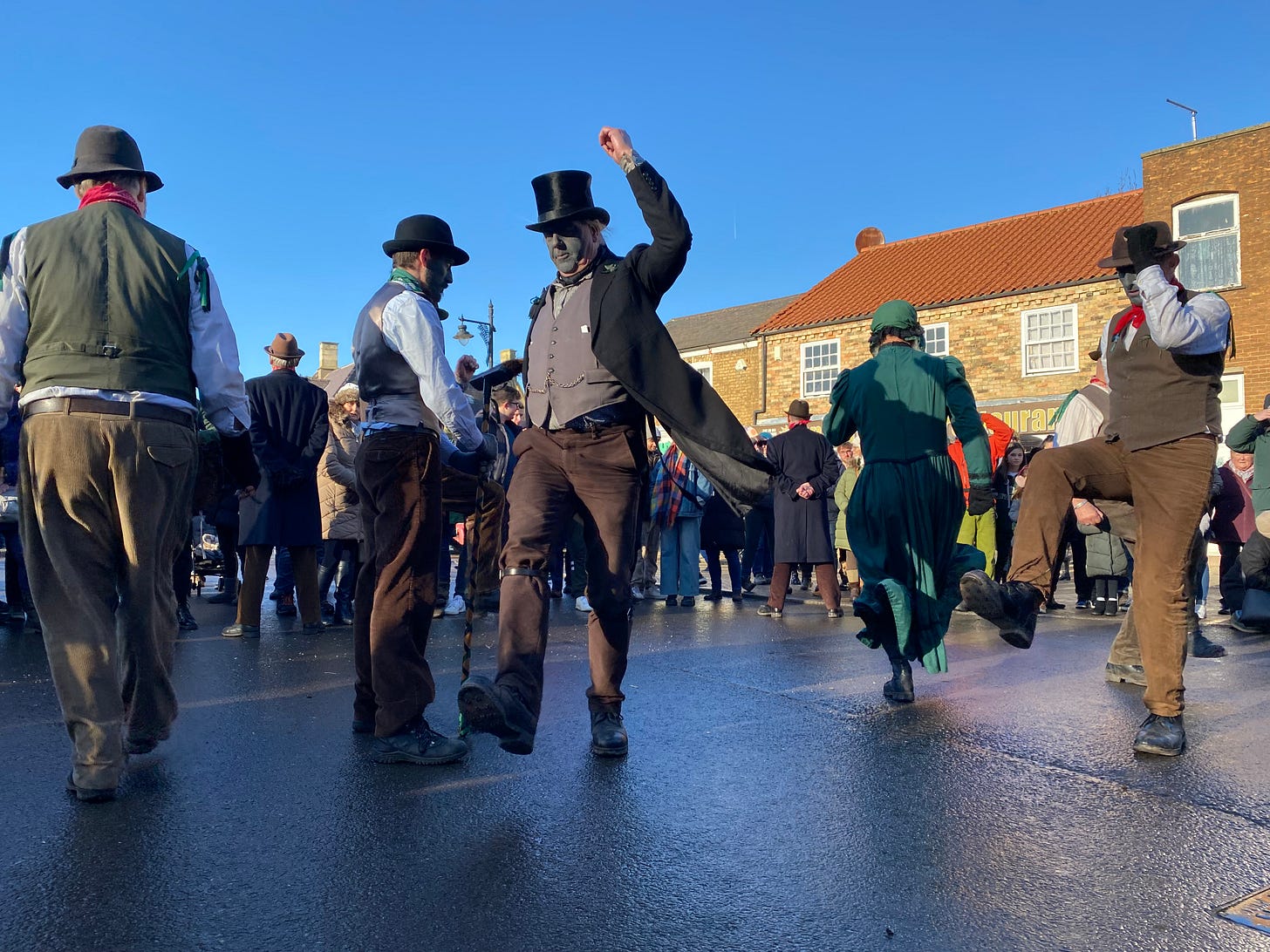
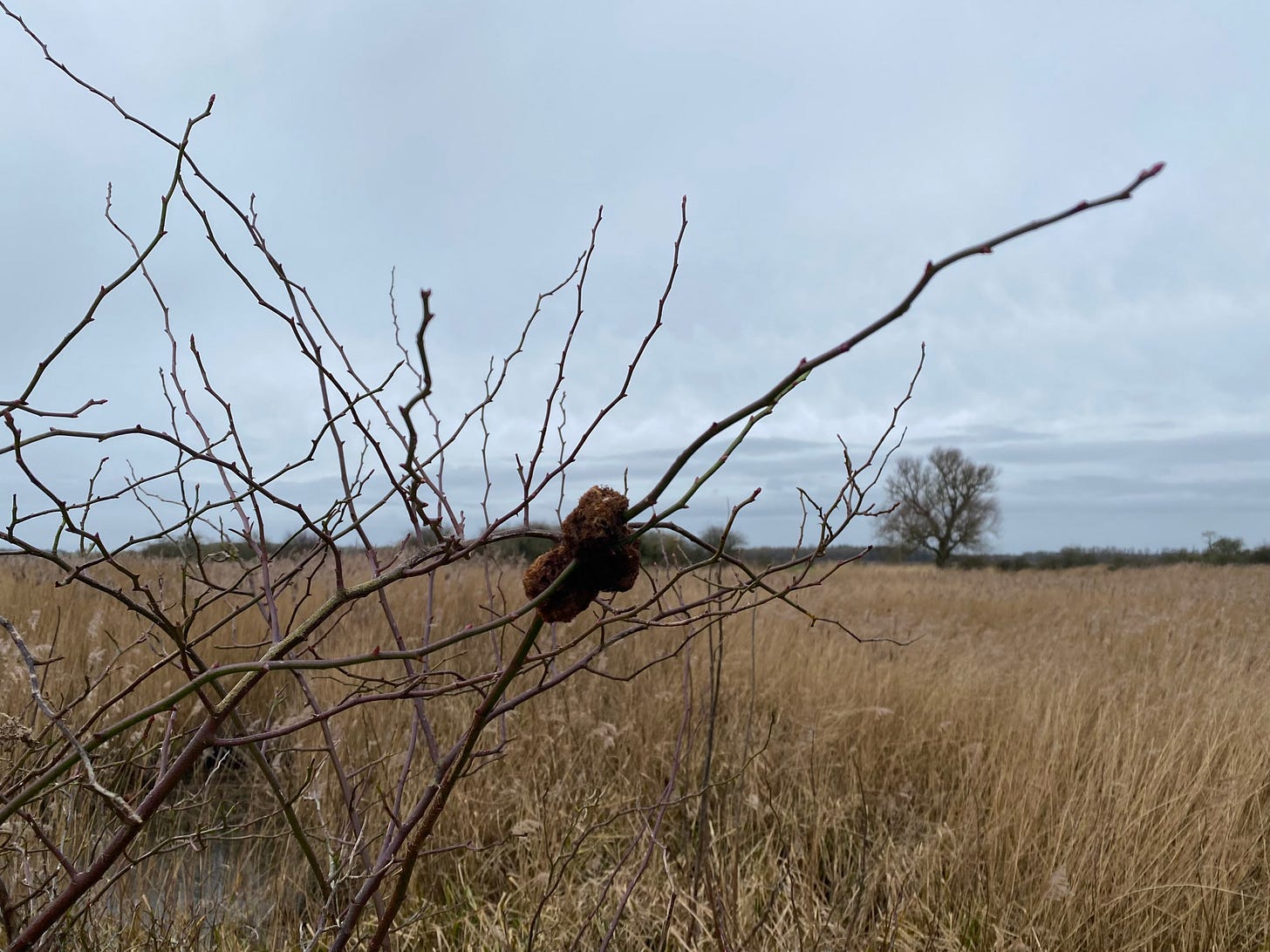
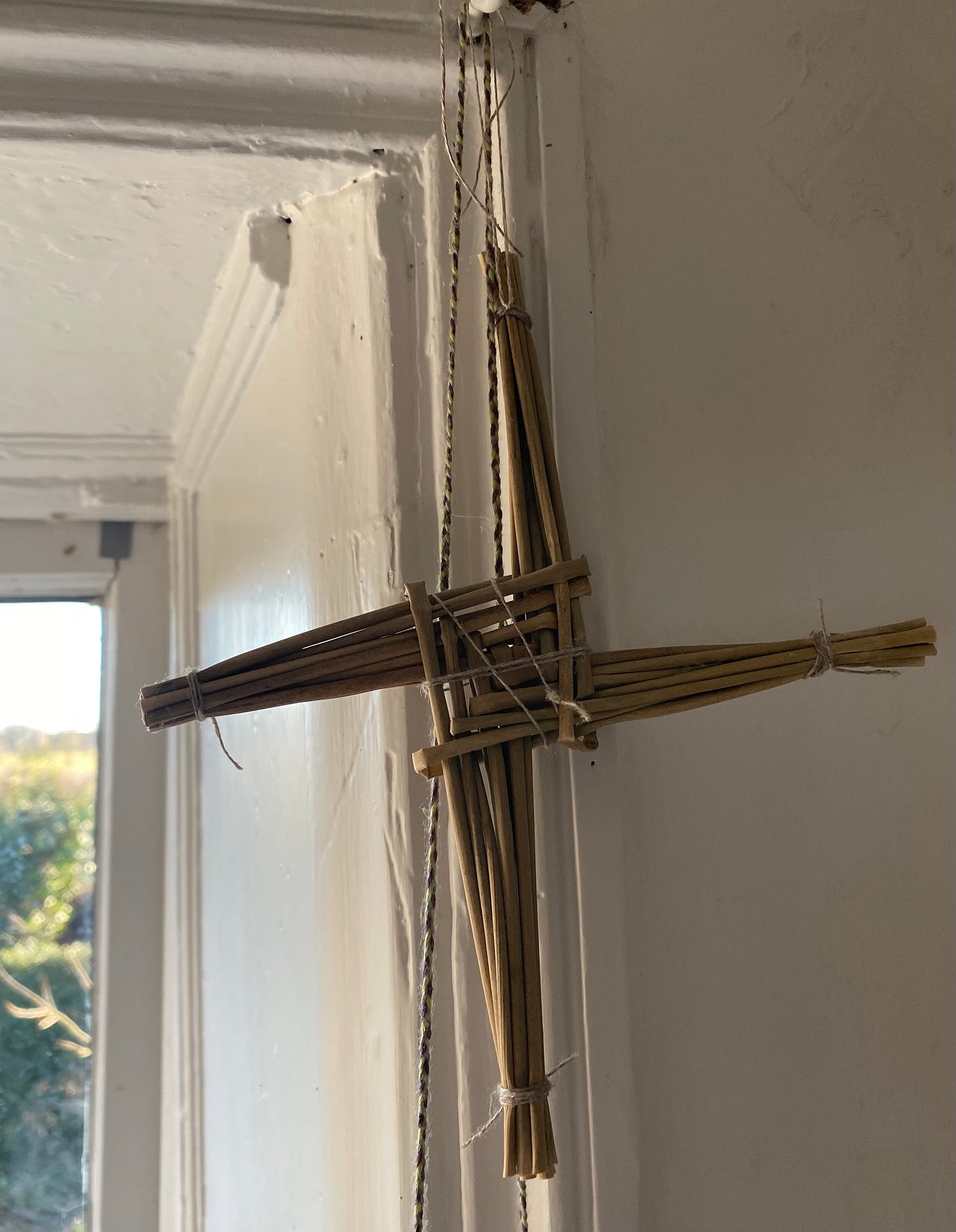
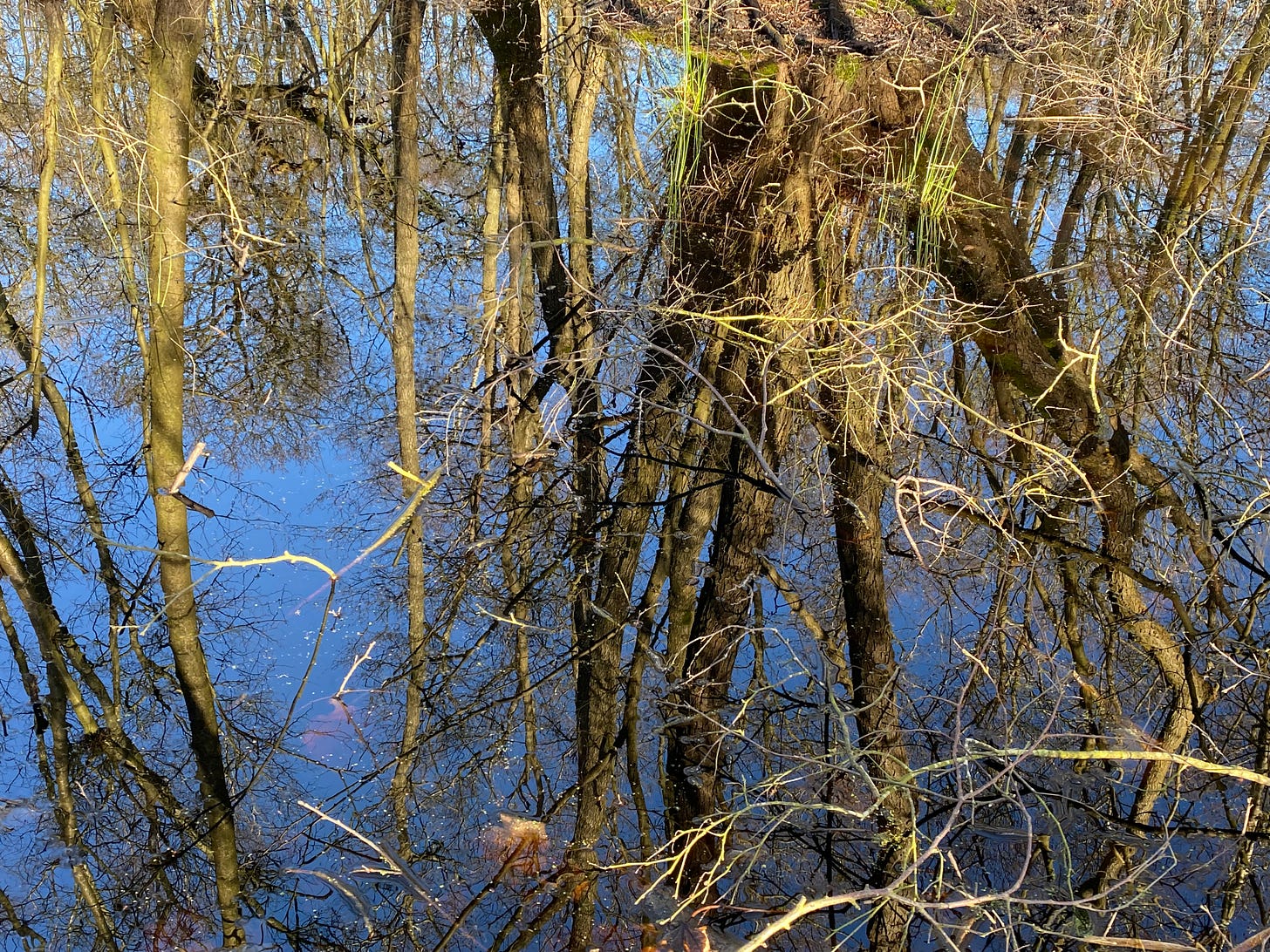







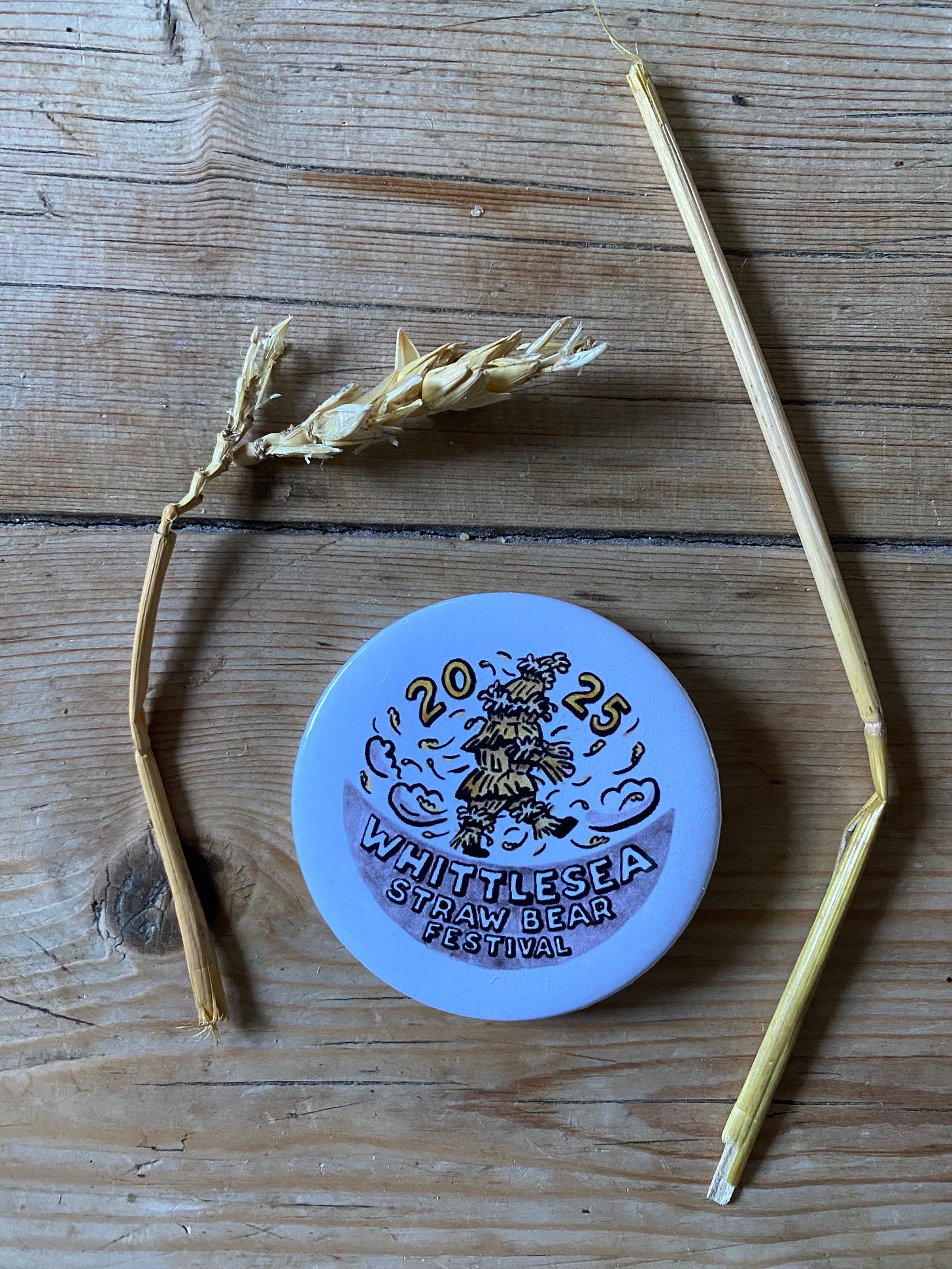

Ah I have to wait until late March at the earliest to see snowdrops ( and I’ve never seen any in the wild) in Ontario. And this year is super cold and snowy.
Did you mean 200° Celsius for the recipe? I hope you eat the lion’s share when you offer them?